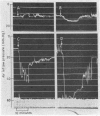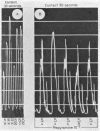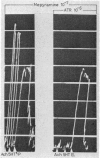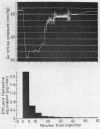Abstract
When soluble antigen—antibody complexes, prepared in antigen excess, were injected into the perfused pulmonary artery of the unsensitized guinea-pig lung, they produced a bronchoconstrictor response which was associated with the appearance of histamine and a slow-reacting substance in the effluent. This activity was inhibited by the presence of normal rabbit serum or rabbit globulin; rabbit albumin and bovine γ-globulin produced no inhibition. Insoluble antigen—antibody complexes prepared at equivalence were at least 125 times less active than soluble complexes prepared in antigen excess. On comparing the activity of different solutions of soluble complex prepared in antigen excess ranging from 2½ to 160 times that required for equivalence, all were found to be equal. The properties of soluble antigen—antibody complexes are consistent with the possibility that circulating antibody may participate in in vivo anaphylaxis, if reached by an amount of antigen greater than that required for equivalence.
Full text
PDF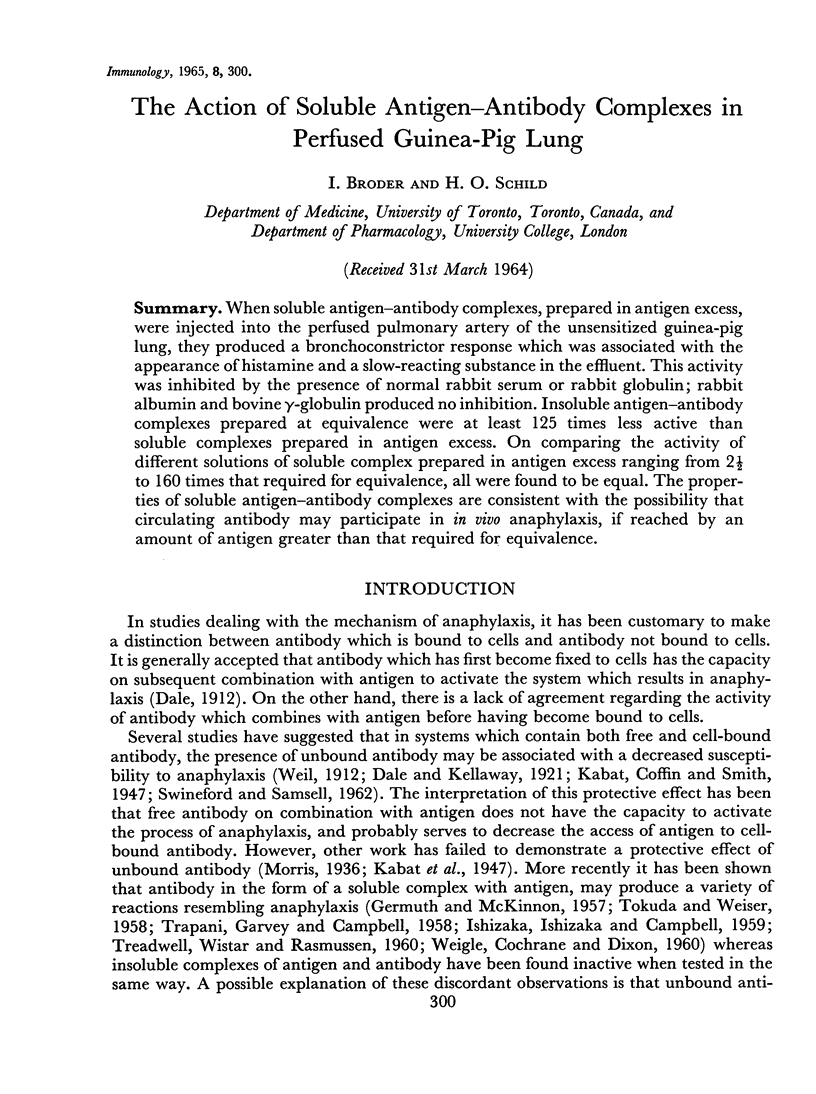
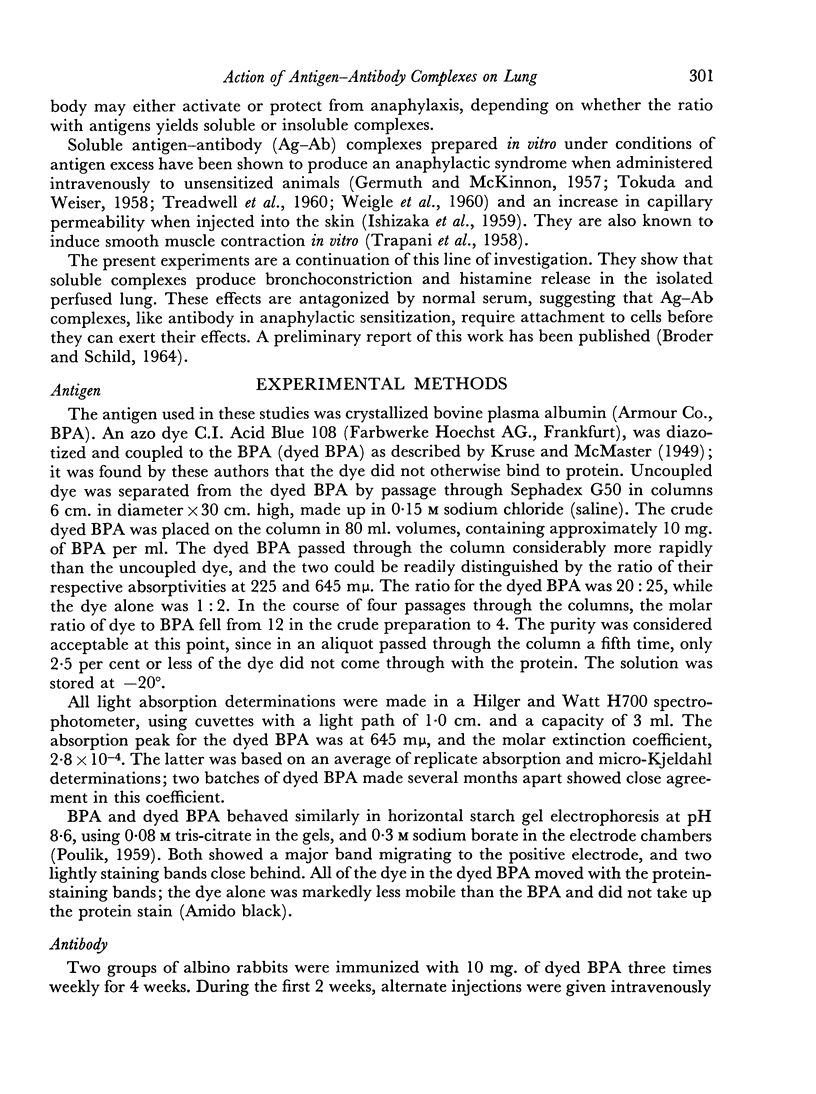
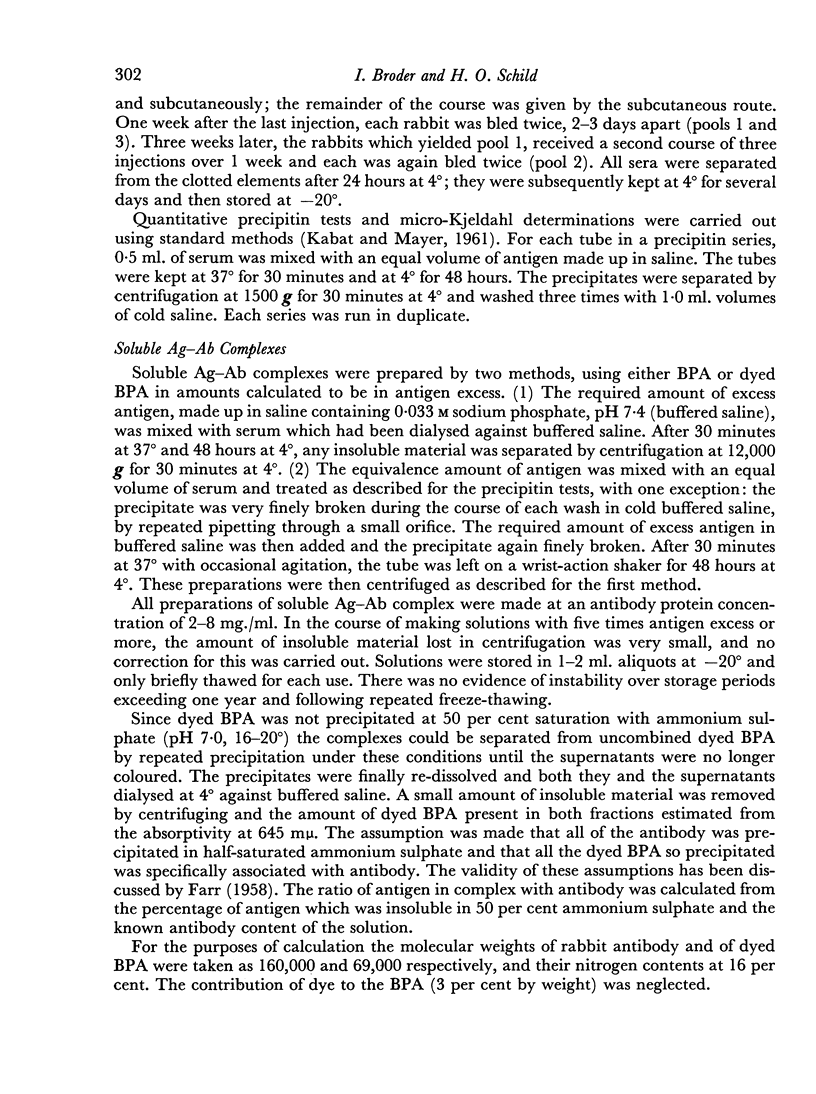
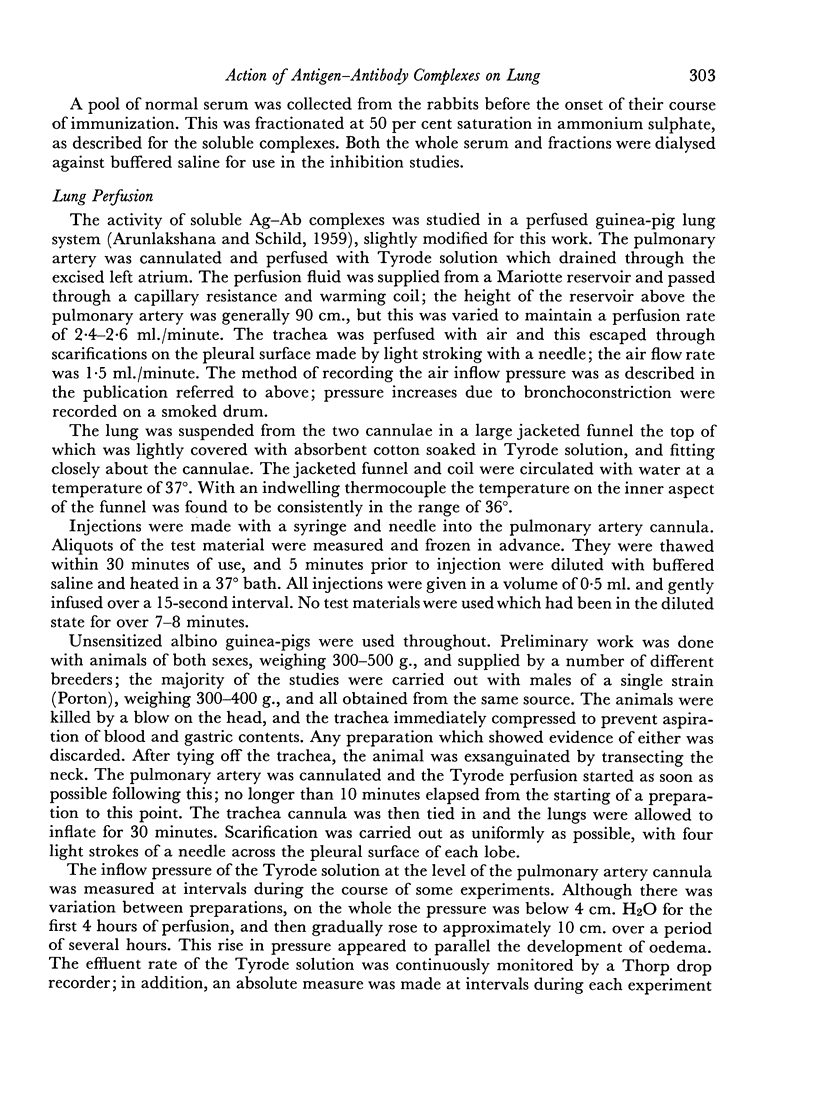
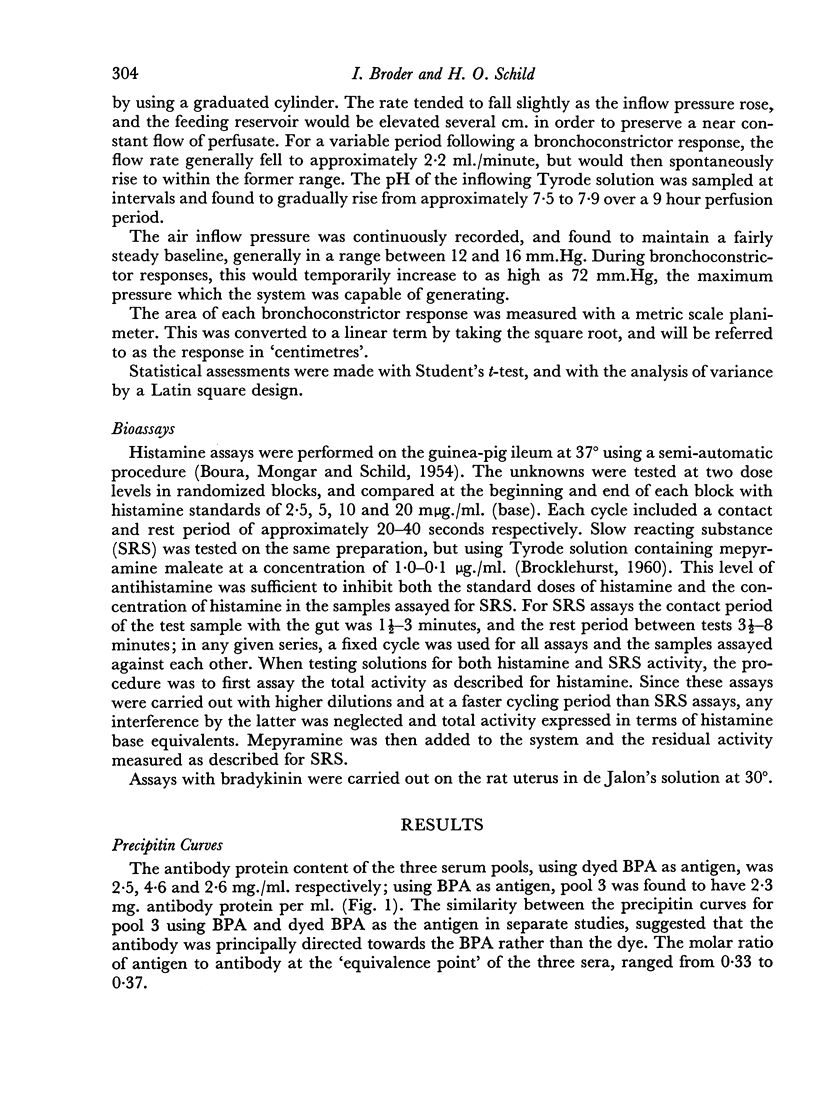
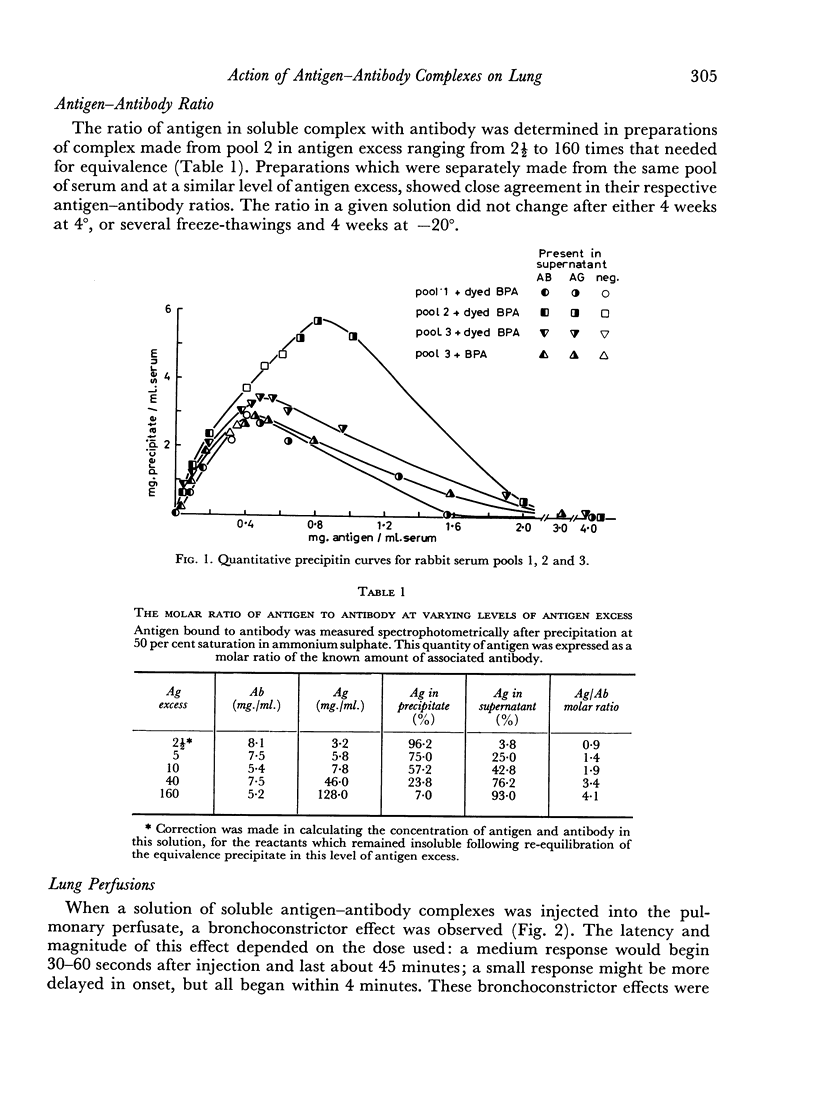
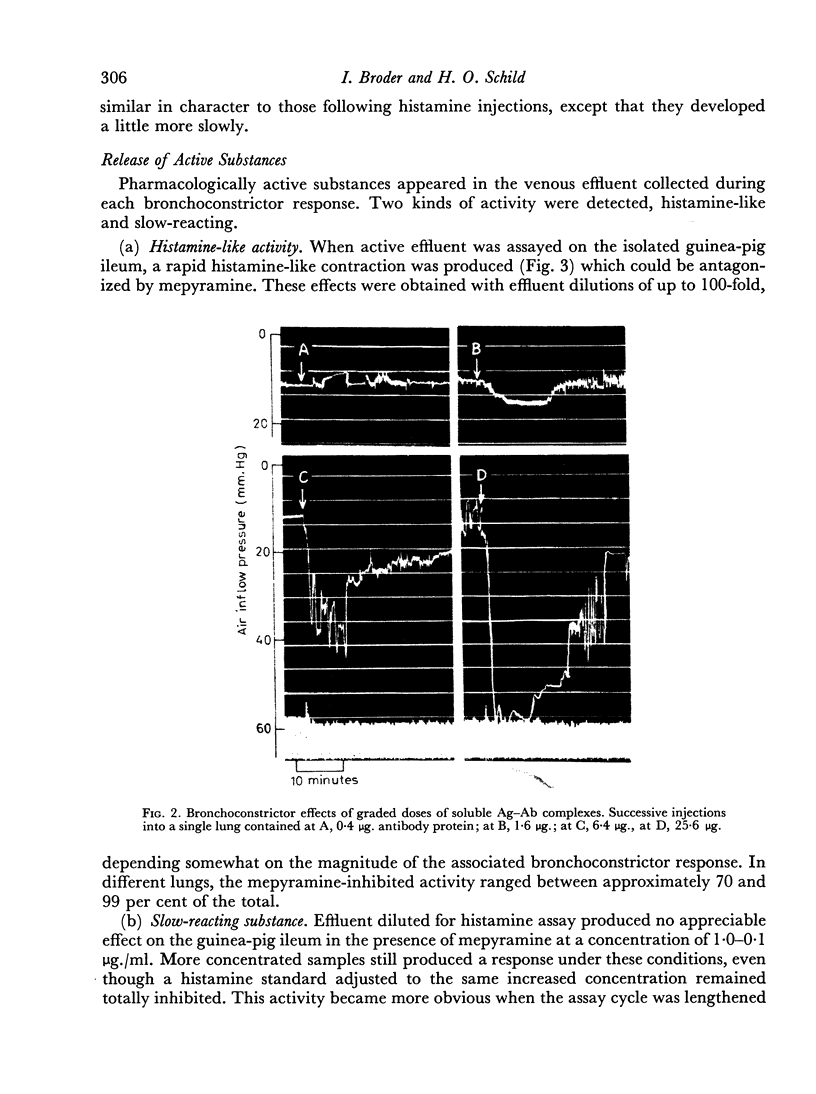
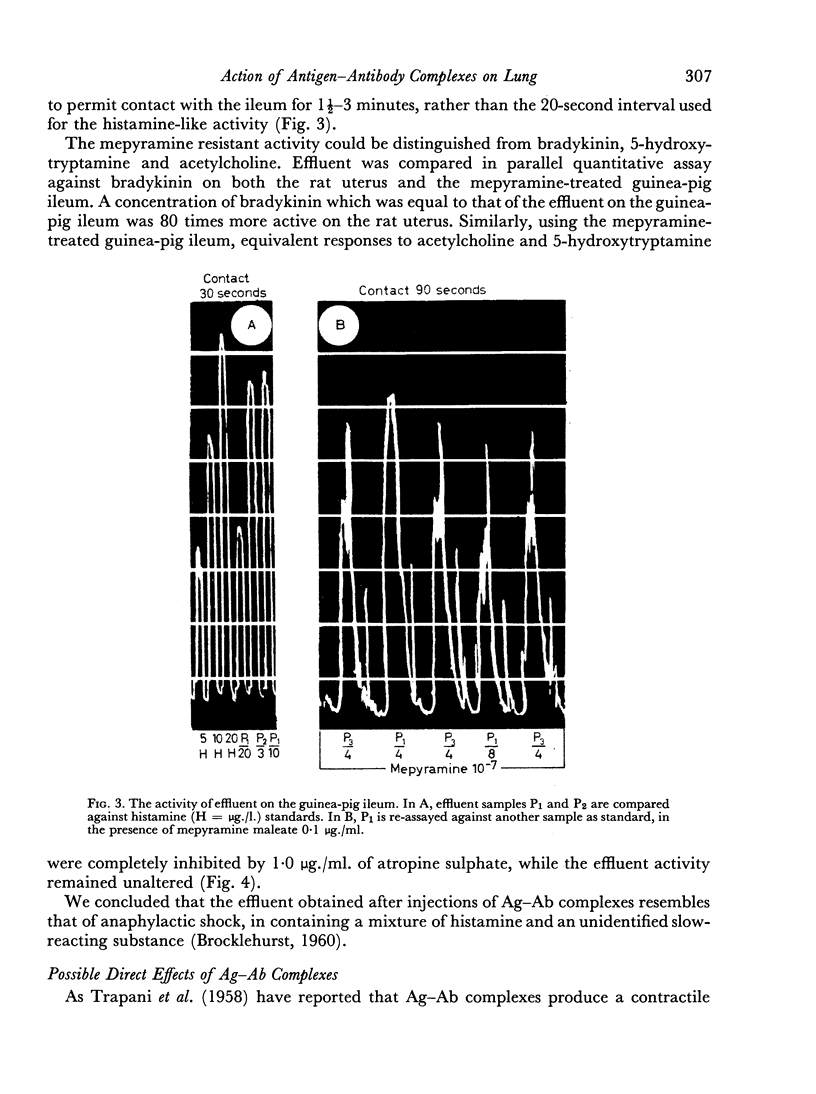
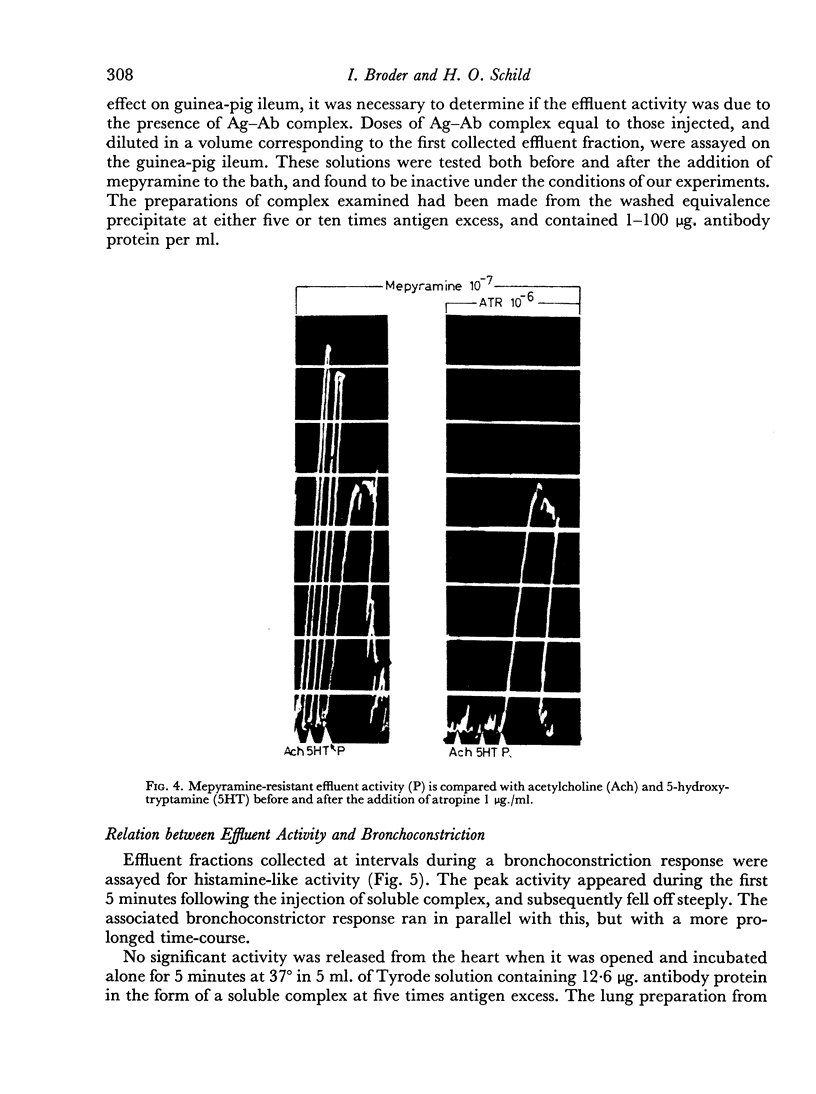
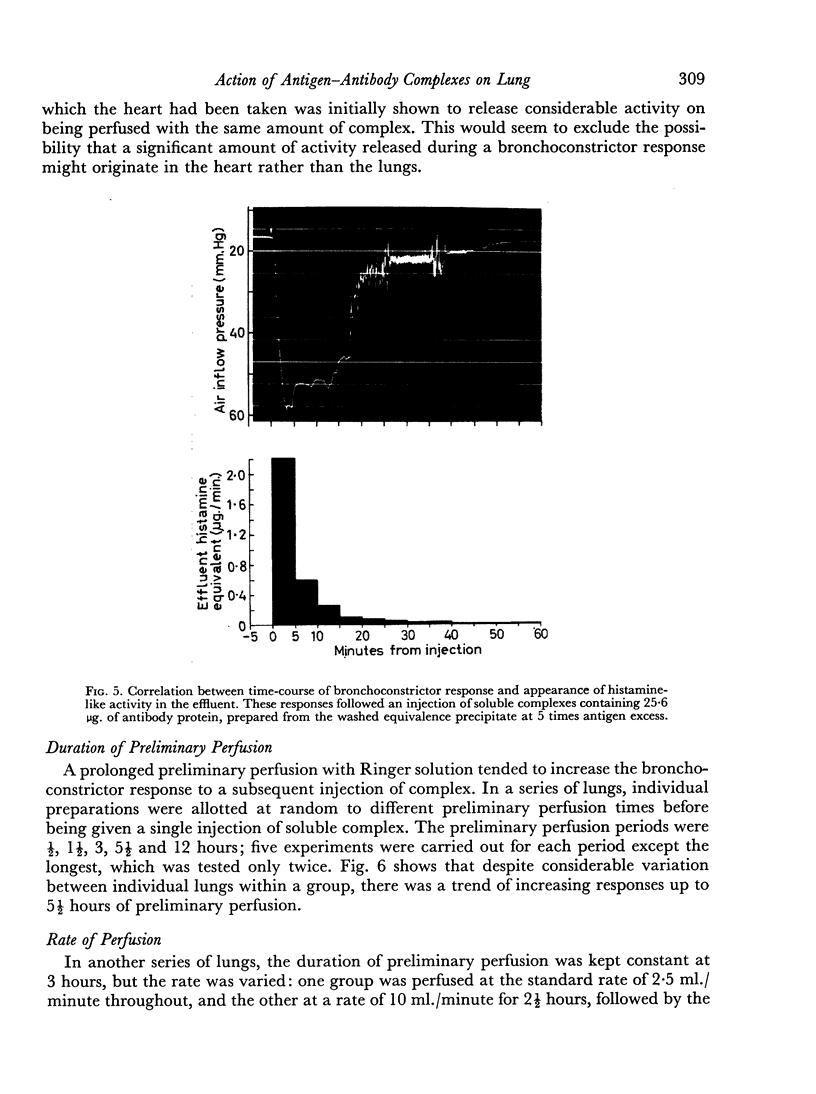
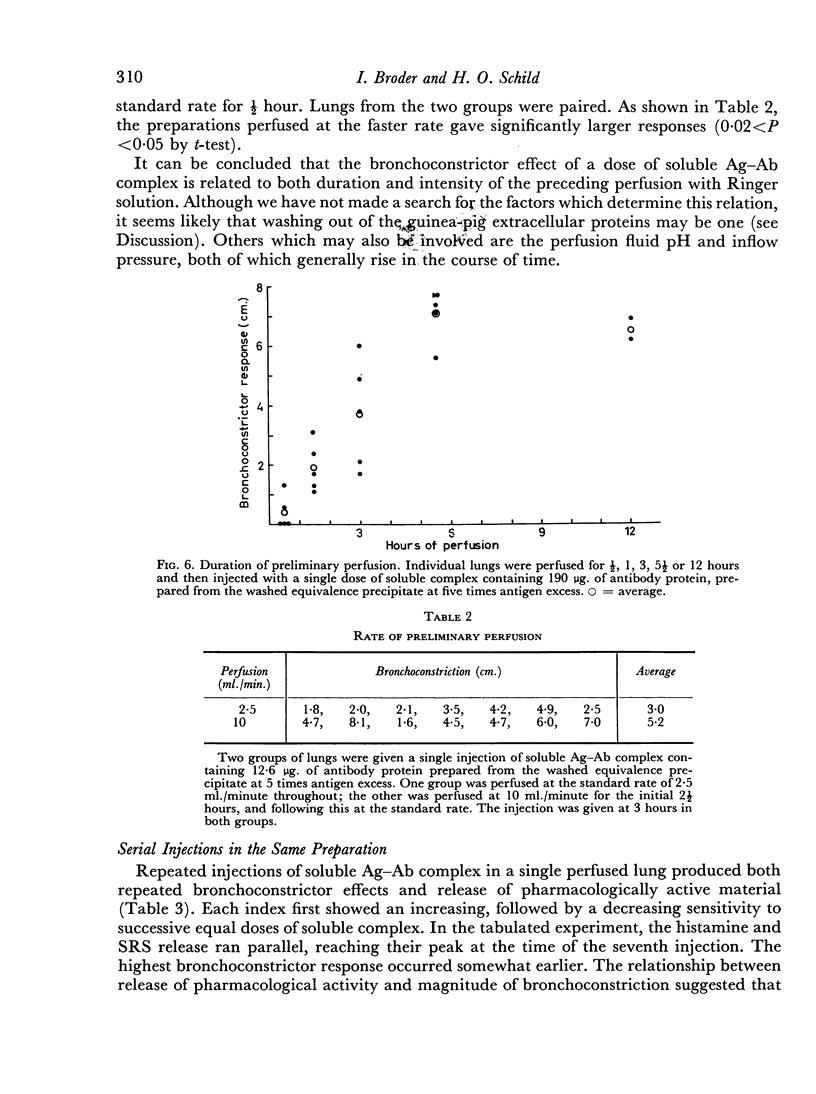
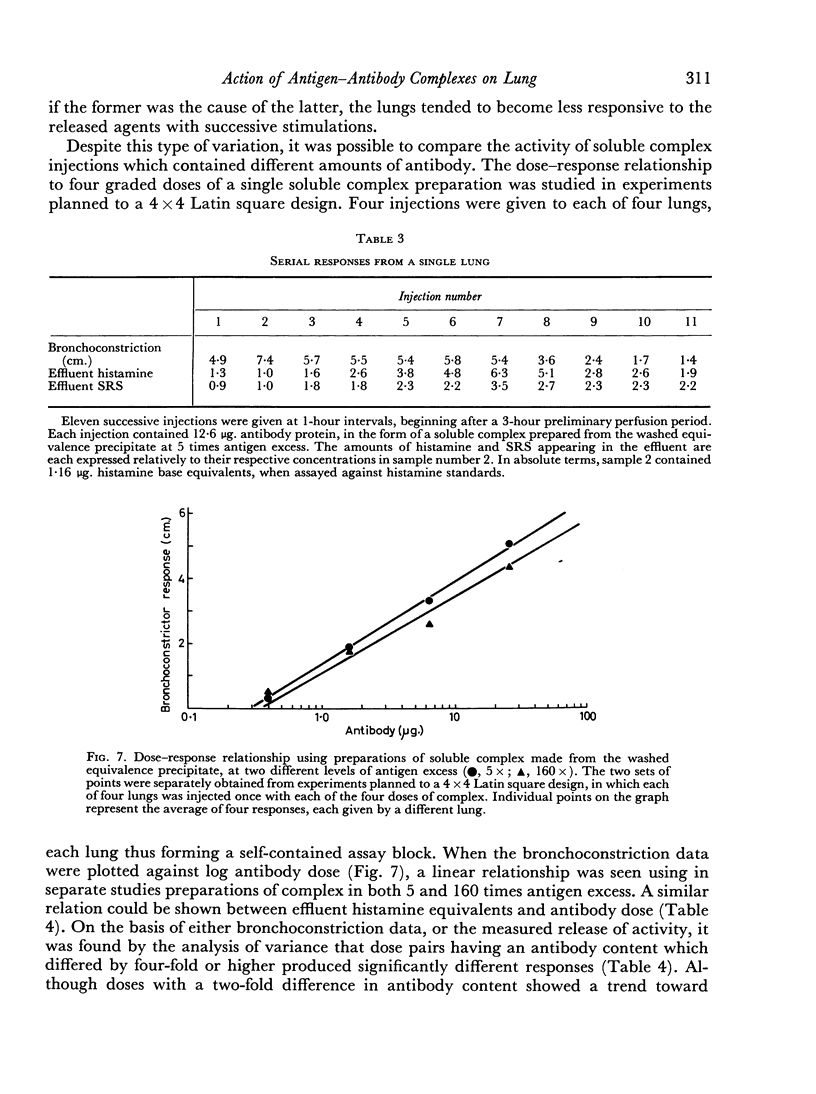
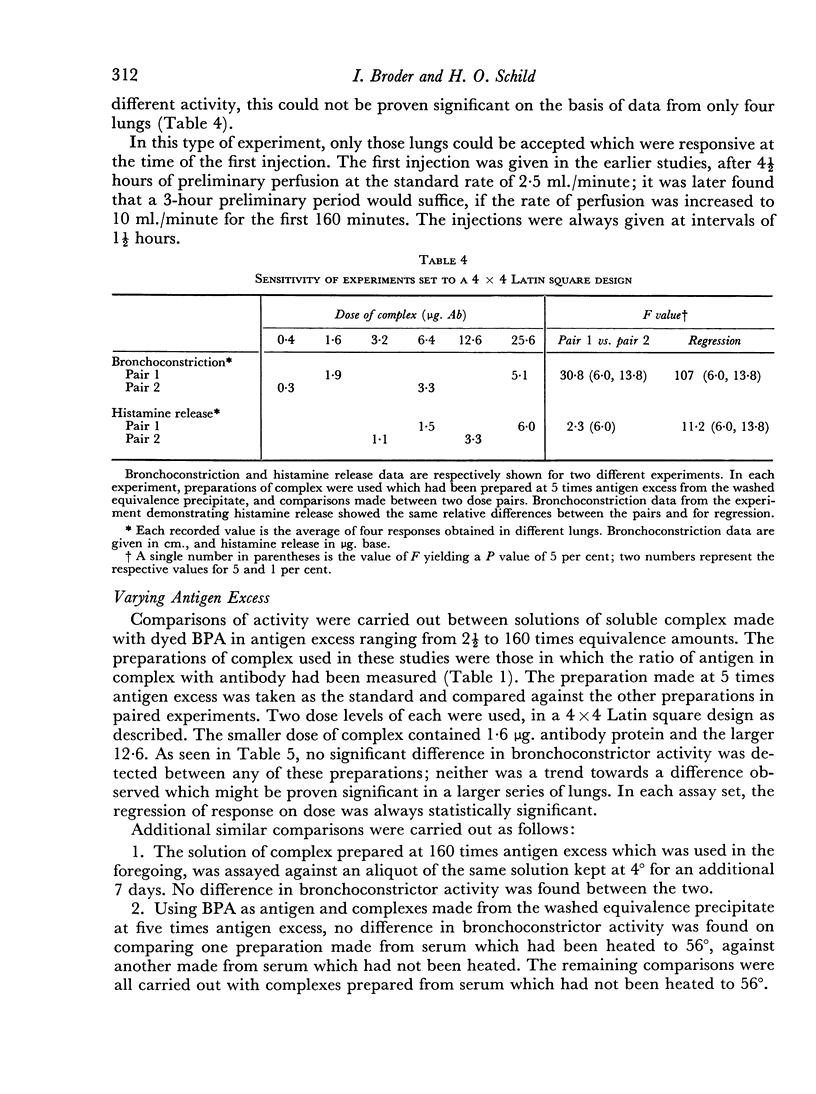
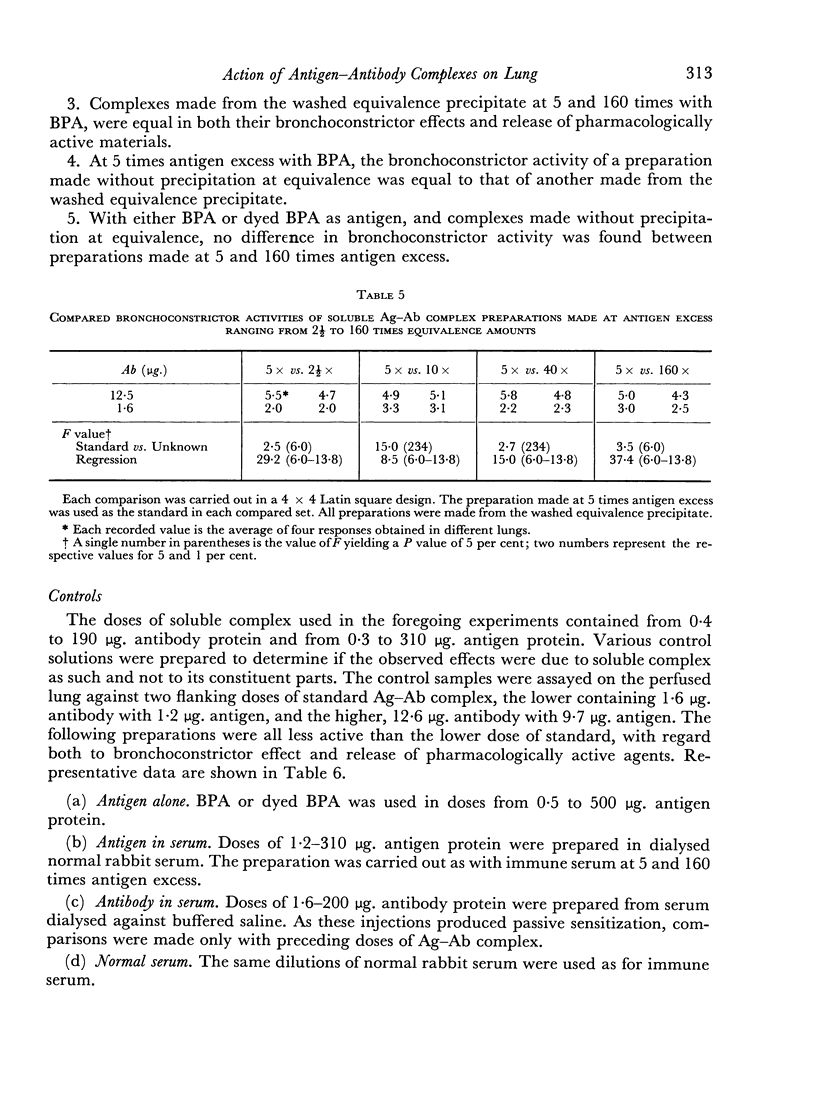
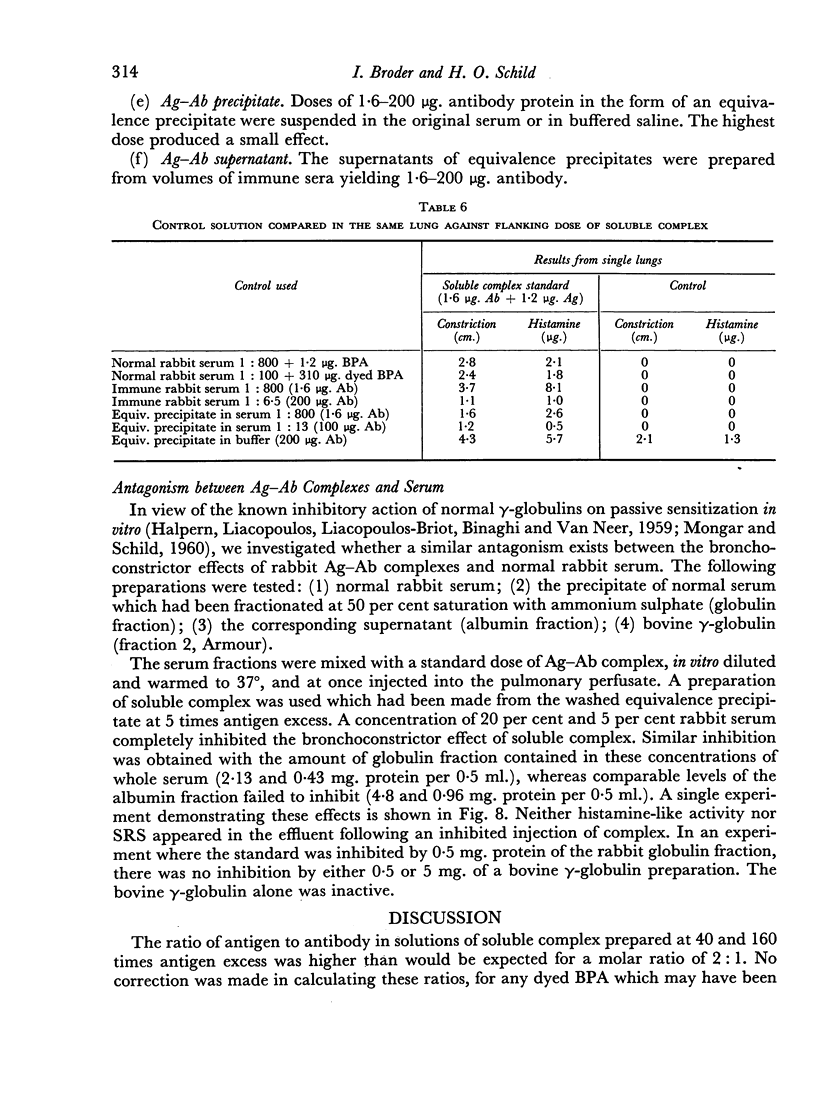
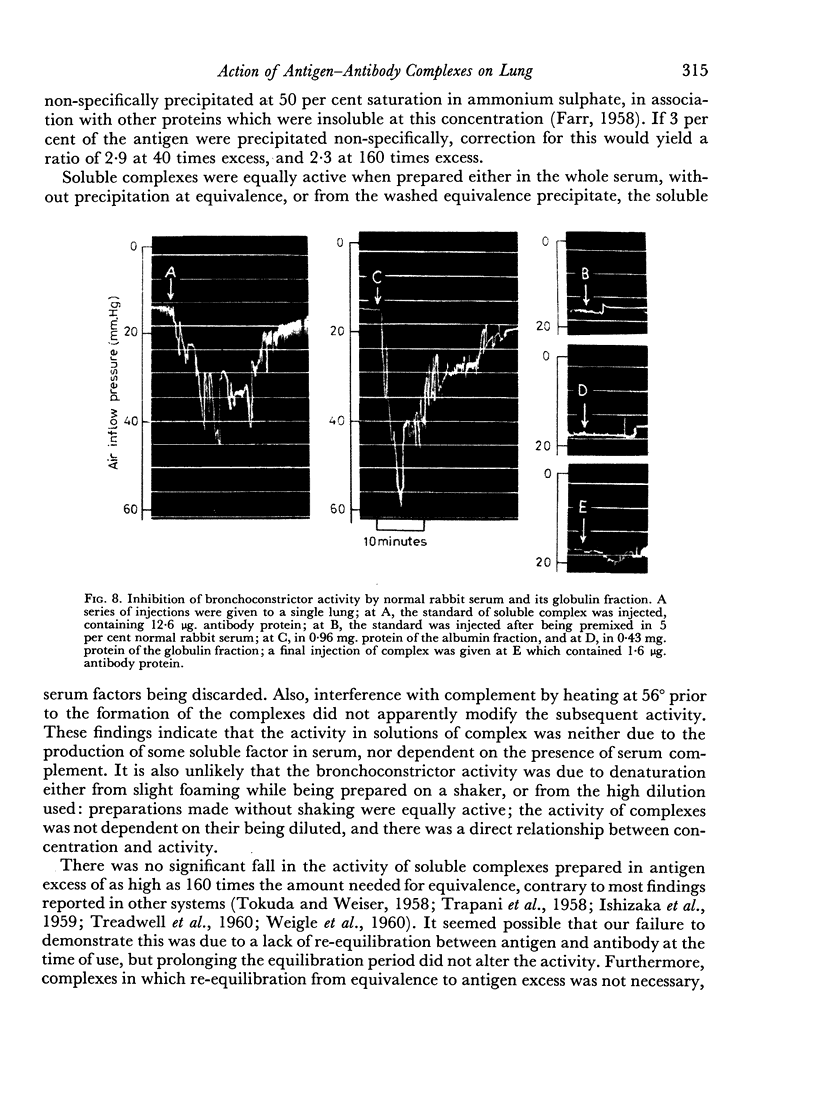
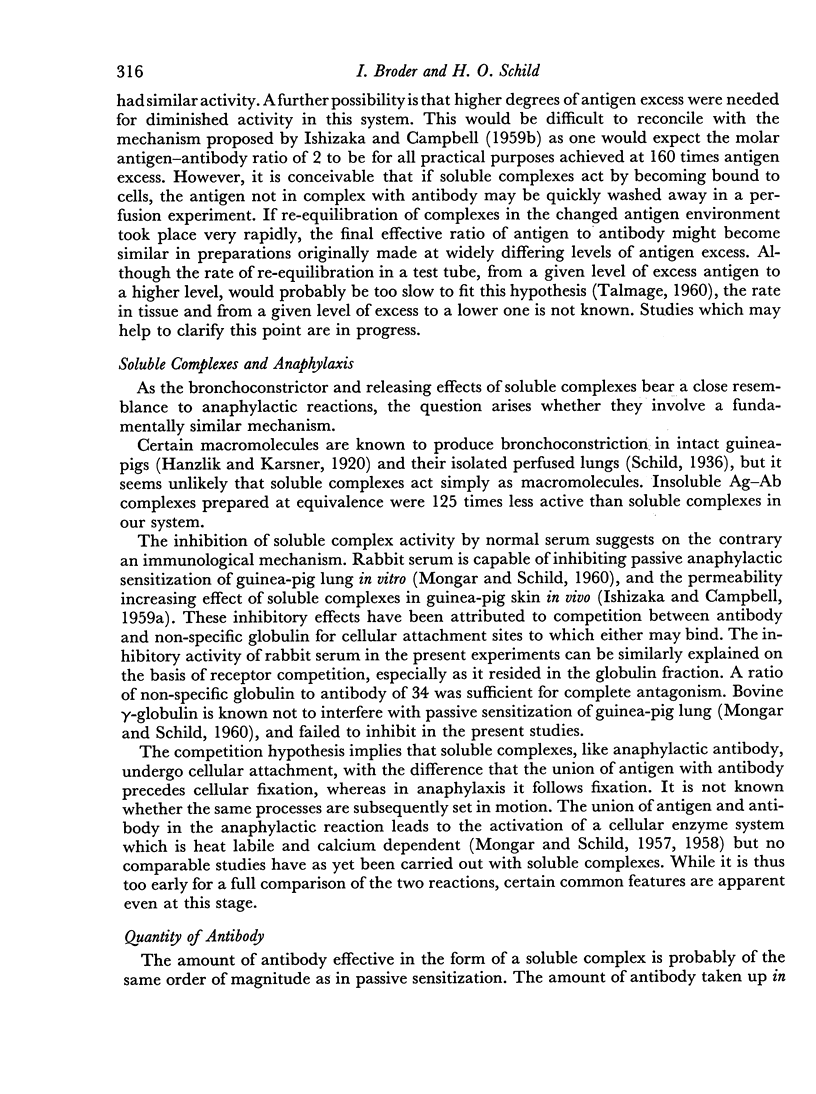
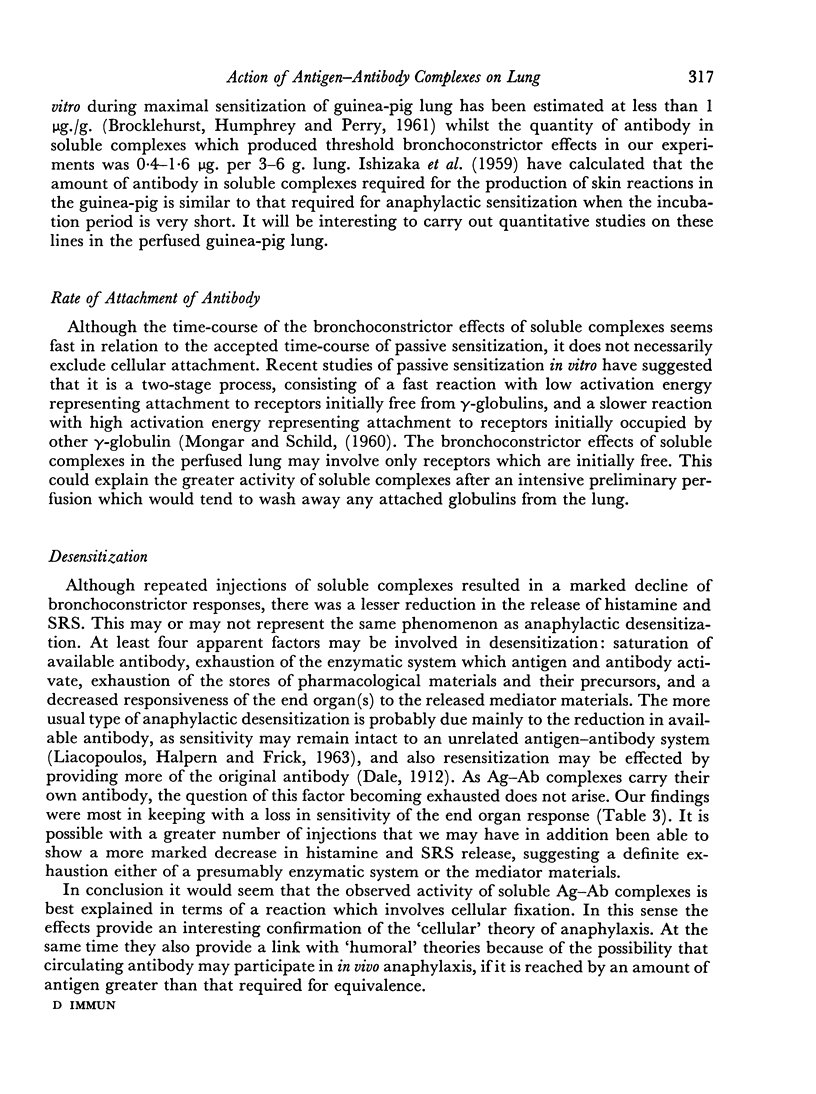
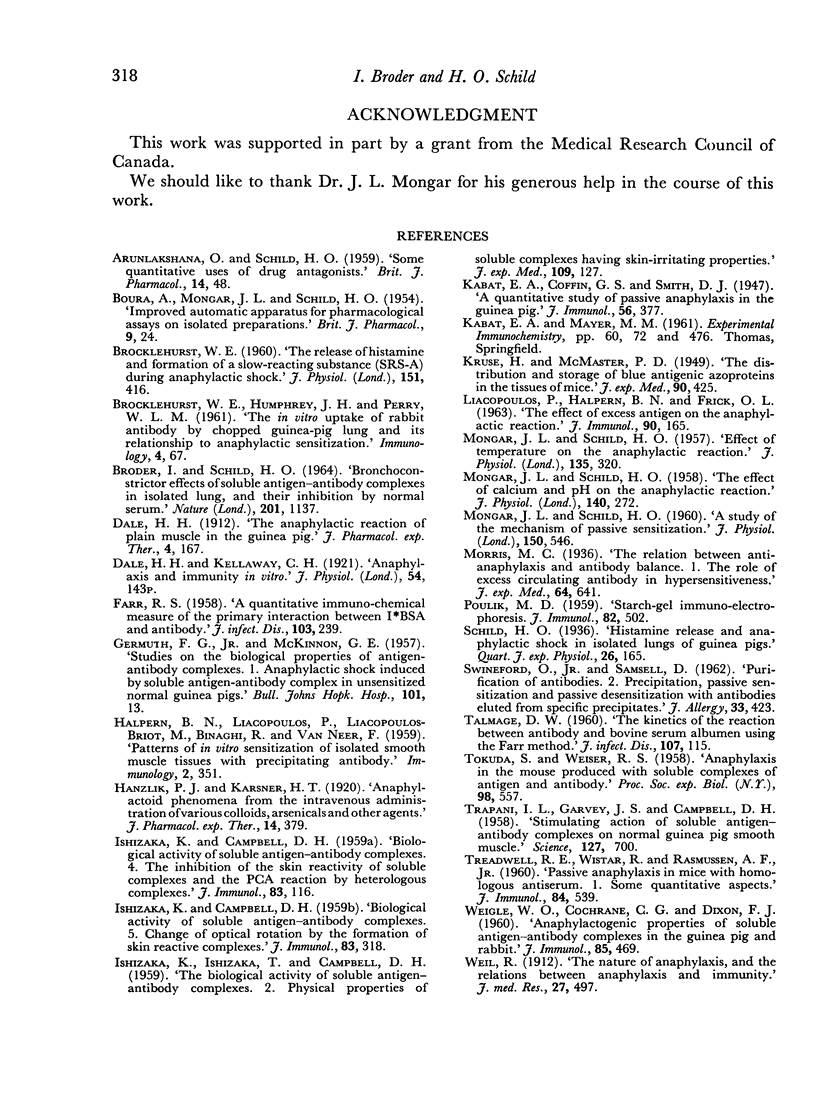
Images in this article
Selected References
These references are in PubMed. This may not be the complete list of references from this article.
- ARUNLAKSHANA O., SCHILD H. O. Some quantitative uses of drug antagonists. Br J Pharmacol Chemother. 1959 Mar;14(1):48–58. doi: 10.1111/j.1476-5381.1959.tb00928.x. [DOI] [PMC free article] [PubMed] [Google Scholar]
- BOURA A., MONGAR J. L., SCHILD H. O. Improved automatic apparatus for pharmacological assays on isolated preparations. Br J Pharmacol Chemother. 1954 Mar;9(1):24–30. doi: 10.1111/j.1476-5381.1954.tb00811.x. [DOI] [PMC free article] [PubMed] [Google Scholar]
- BROCKLEHURST W. E. The release of histamine and formation of a slow-reacting substance (SRS-A) during anaphylactic shock. J Physiol. 1960 Jun;151:416–435. doi: 10.1113/jphysiol.1960.sp006449. [DOI] [PMC free article] [PubMed] [Google Scholar]
- BRODER I., SCHILD H. O. BRONCHOCONSTRICTOR EFFECTS OF SOLUBLE ANTIGEN-ANTIBODY COMPLEXES IN ISOLATED LUNG, AND THEIR INHIBITION BY NORMAL SERUM. Nature. 1964 Mar 14;201:1137–1138. doi: 10.1038/2011137a0. [DOI] [PubMed] [Google Scholar]
- FARR R. S. A quantitative immunochemical measure of the primary interaction between I BSA and antibody. J Infect Dis. 1958 Nov-Dec;103(3):239–262. doi: 10.1093/infdis/103.3.239. [DOI] [PubMed] [Google Scholar]
- GERMUTH F. G., Jr, MCKINNON G. E. Studies on the biological properties of antigen-antibody complexes. I. Anaphylatic shock induced by soluble antigen-antibody complexes in unsensitized normal guinea pigs. Bull Johns Hopkins Hosp. 1957 Jul;101(1):13–44. [PubMed] [Google Scholar]
- HALPERN B. N., LIACOPOULOS P., LIACOPOULOS-BRIOT M., BINAGHI R., VAN NEER F. Patterns of in vitro sensitization of isolated smooth muscle tissues with precipitating antibody. Immunology. 1959 Oct;2:351–362. [PMC free article] [PubMed] [Google Scholar]
- ISHIZAKA K., CAMPBELL D. H. Biologic activity of soluble antigen-antibody complexes. IV. The inhibition of the skin reactivity of soluble complexes and the PCA reaction by heterologous complexes. J Immunol. 1959 Aug;83:116–126. [PubMed] [Google Scholar]
- ISHIZAKA K., CAMPBELL D. H. Biologic activity of soluble antigen-antibody complexes. V. Change of optical rotation by the formation of skin reactive complexes. J Immunol. 1959 Sep;83:318–326. [PubMed] [Google Scholar]
- ISHIZAKA K., ISHIZAKA T., CAMPBELL D. H. The biological activity of soluble antigen-antibody complexes. II. Physical properties of soluble complexes having skin-irritating activity. J Exp Med. 1959 Feb 1;109(2):127–143. doi: 10.1084/jem.109.2.127. [DOI] [PMC free article] [PubMed] [Google Scholar]
- LIACOPOULOS P., HALPERN B. N., FRICK O. L. The effect of excess antigen on the anaphylactic reaction. J Immunol. 1963 Feb;90:165–171. [PubMed] [Google Scholar]
- MONGAR J. L., SCHILD H. O. A study of the mechanism of passive sensitization. J Physiol. 1960 Mar;150:546–564. doi: 10.1113/jphysiol.1960.sp006404. [DOI] [PMC free article] [PubMed] [Google Scholar]
- MONGAR J. L., SCHILD H. O. Effect of temperature on the anaphylactic reaction. J Physiol. 1957 Feb 15;135(2):320–338. doi: 10.1113/jphysiol.1957.sp005713. [DOI] [PMC free article] [PubMed] [Google Scholar]
- MONGAR J. L., SCHILD H. O. The effect of calcium and pH on the anaphylactic reaction. J Physiol. 1958 Feb 17;140(2):272–284. doi: 10.1113/jphysiol.1958.sp005933. [DOI] [PMC free article] [PubMed] [Google Scholar]
- POULIK M. D. Starch-gel immunoelectrophoresis. J Immunol. 1959 Jun;82(6):502–515. [PubMed] [Google Scholar]
- TALMAGE D. W. The kinetics of the reaction between antibody and bovine serum albumin using the Farr method. J Infect Dis. 1960 Jul-Aug;107:115–132. doi: 10.1093/infdis/107.1.115. [DOI] [PubMed] [Google Scholar]
- TOKUDA S., WEISER R. S. Anaphylaxis in the mouse produced with soluble complexes of antigen and antibody. Proc Soc Exp Biol Med. 1958 Jul;98(3):557–561. doi: 10.3181/00379727-98-24106. [DOI] [PubMed] [Google Scholar]
- TRAPANI I. L., GARVEY J. S., CAMPBELL D. H. Stimulating action of soluble antigen-antibody complexes on normal guinea-pig smooth muscle. Science. 1958 Mar 28;127(3300):700–701. doi: 10.1126/science.127.3300.700. [DOI] [PubMed] [Google Scholar]
- TREADWELL P. E., WISTAR R., RASMUSSEN A. F., Jr Passive anaphylaxis in mice with homologous antiserum. I. Some quantitative aspects. J Immunol. 1960 May;84:539–544. [PubMed] [Google Scholar]
- WEIGLE W. O., COCHRANE C. G., DIXON F. J. Anaphylactogenic properties of soluble antigen-antibody complexes in the guinea pig and rabbit. J Immunol. 1960 Nov;85:469–477. [PubMed] [Google Scholar]



